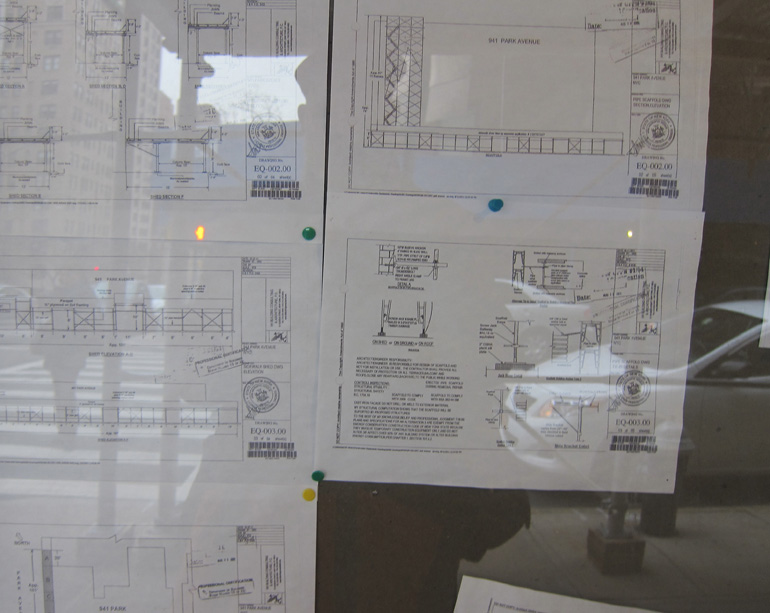Gotham Diary:
Beistegui
10 February 2012
Nancy Mitford to Lady Pamela Berry, 4 January 1952:
The Cabrols & Co have asked me to write a little sketch for them to act so it is to be an old French Duke & his wife sitting in their tourist-infected château while their only child explains to them that she is now a man. Everything she says is echoed by what the tourists are saying, you can imagine how it might be funny. They are having a revue this year to replace the usual ball — Charlie [Beistegui] is supposed to have killed balls for ever.
I found this letter when I looked up Carlos Beistegui in the index to Love From Nancy, Mitfords letters. I wasn’t entirely sure that his name would appear, but of course, there it was. Nancy didn’t go to the Beistegui ball, but she did date a letter to Gladwyn Jebb “Beistegui Ball Day.” The ball was given, in the Palazzo Labia at Venice, on 3 February 1951, and it did not kill balls for ever, because Truman Capote (who didn’t go, either)Â made sure that it didn’t.
Now you will be asking, “WTF Charlie Beistegui?” as, indeed, I have been doing for years. According to Wikipedia, he is “not to be confused with his uncle (1863-1953), whose collection of notable 18th- and 19th-century paintings was donated to the Louvre.” You can — and ought to — check out the guest list; there are many other WTF names.Â
In another letter to Lady Pamela, one that editor Charlotte Mosley declined to print in full but a passage from which appears in a footnote to the letter to Sir Gladwyn, Nancy wrote, “I suppose it is rather dotty not to go to the Ball. But a dress of the mingiest description would have been £200 — the whole thing would have cost £300 I guess, hardly worth it.”
And there you have it: why Nancy Mitford remained on the fringe of what was called Café Society. Nancy never says that she was invited to the ball, but presumably she could have got in had she wanted to go. But to spend all that money on a costume? The Mitford commitment to frivolity had its limits.
Nevertheless, Nancy Mitford knew a lot of the poeple who constituted Café Society, and their names pepper Mosley’s footnotes. Mostly the footnotes, one suspects, because Café Societals (if I may be permitted) were not much given to writing. It’s not just that writing is work, hard work even for the most fluent writers, but also that writing is such a damned disorderly experience. You write a sentence and read it and think about it and can’t decide what’s not quite right about it, because there’s a verb out that stoutly refuses to come to mind, and, what’s this, a slew of typos. You can see why people who were almost studious about their soigné appearance would find the very act of writing unpleasant. (Now we know why Edith Wharton did all her writing first thing in the morning, while still in bed.) The picture on the dust jacket of Love From Nancy shows the writer seated in her drawing room in the rue Monsieur, with a stiff-backed writing pad on her lap, braced on the arm of her bergère. It would be fun to know how much the dress that she’s wearing cost. I doubt very much that the picture tells us what Nancy looked like when she was hard at work.
When I was a boy, Elsa Maxwell’s name was in the air. Who was Elsa Maxwell? She gave parties and knew Everybody and was an important member of Café Society, whatever that was. I doubt that my parents had a much clearer picture of Maxwell than I did. Then, in the last days of my youth, Diana Vreeland, another member of Café Society (said to be dead at the time), published Allure, with lots of pictures of fat and ugly old Elsa Maxwell. Who was she?
There was no Internet in those days. You might find out a tidbit here or there, but you’d never remember it, because everything about Café Society was ephemeral, especially its history.
Which is why I bought, after much agonizing over the expense (thirty-five seconds), Thierry Coudert’s Café Society: Socialites, Patrons, and Artists 1920 to 1960 (Flammarion), at the Museum yesterday. I expect that it will be gracing a lot of Upper East Side coffee tables this season, and for many seasons to come, because it is the ideal coffee-table book. Lots of pictures, many of them iconic, with a few pages of small print about the important people. I have always always always wanted to know who Mona Bismarck was, and I have never never never been able to hold a single fact about her in my mind for longer than a gnat’s lifespan. Now I have a book. Bismarck, who was born in Louisville and who married five times (the fourth was to the Iron Chancellor’s grandson), was — beautiful and rich, and of course unhappy at the end. If they lived long enough, these people were usually unhappy.
The inspiration for Thierry Coudert’s book appears to be a sweet and jolly scrapbook kept by — guess who! — the baron and baronne de Cabrol!
Having opened Nancy Mitford’s letters, I had to go on reading a few, and I came across this gem, from a letter about her wildly successful trip (she was “lionized”) to Rome, after the publication of The Blessing.
Of course I am in a fog, know nobody’s name & said to a very grand Italian, thinking he was English “I suppose you know a lot of Italians?” which went down very badly.
I suddenly understood that the marvelous charm of the Mitford girls owes to their all having been naughty little boys in youth.
When I find out where the Café was, I’ll let you know.

